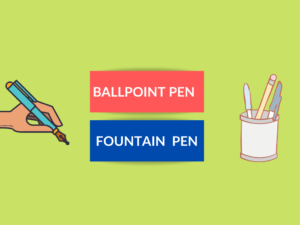Drawing vs Painting: Understanding the Key Differences
Have you ever wondered about the difference between drawing and painting? Both are artistic expressions, but they involve distinct techniques and tools. Drawing and painting have their own unique characteristics and purposes. If you are curious to explore these variations, this article will guide you through a comprehensive understanding of drawing and painting.
What is Drawing?
Drawing is the technique of creating an image using various tools such as pencils, pens, charcoal, or pastels. It involves making marks on a surface, typically paper, by applying pressure and strokes. Drawing allows the artist to capture lines, shapes, and forms with precision and detail.
Examples of Drawing
1. Sketches of nature scenes
2. Portraits capturing facial features
3. Architectural blueprints
4. Doodles and cartoons
5. Diagrams and technical illustrations
Uses of Drawing
1. Preliminary sketches for paintings
2. Illustrations for books, comics, and graphic novels
3. Designing concept art for video games and movies
4. Explaining complex ideas through visual aids
5. Documenting scientific observations
What is Painting?
Painting is a technique of applying pigments, typically in the form of paint, onto a surface such as canvas, wood, or walls. Unlike drawing, painting allows for a broader range of expression, involving the use of colors, textures, and various brush strokes. It enables the artist to convey emotions and create visually captivating compositions.
Examples of Painting
1. Oil paintings of landscapes
2. Watercolor florals
3. Acrylic abstract art
4. Spray-painted urban murals
5. Tempera religious icons
Uses of Painting
1. Fine art for exhibitions and galleries
2. Decorative artwork for homes and offices
3. Creating visual narratives, like historical scenes or mythology
4. Expressing emotions and personal experiences
5. Preserving cultural heritage and traditions
Differences between Drawing and Painting
| Difference Area | Drawing | Painting |
|---|---|---|
| Medium | Drawing tools like pencils, pens, charcoal, or pastels | Paint applied with brushes or other tools |
| Color Usage | Often monochrome or limited color palettes | Wide range of colors with extensive mixing possibilities |
| Depth and Texture | Usually lacks depth and texture, appearing flat | Can incorporate depth, textures, and layers |
| Detailing | Allows for intricate details with precise lines | Offers more freedom for loose brushwork and blending |
| Coverage | Does not cover the entire surface, leaving negative space | Covers the entire surface with paint, leaving no blank areas |
| Blendability | Difficult to blend different tones and shades seamlessly | Various techniques allow for easy blending of colors |
| Correction | Erasing or modifying mistakes is relatively straightforward | Modifying or correcting mistakes can be challenging |
| Drying Time | Dries quickly, allowing for immediate handling and framing | Takes longer to dry, requiring patience and careful handling |
| Surface | Typically done on paper or sketchbooks | Can be done on various surfaces like canvas, wood, or walls |
| Artistic Styles | Often associated with fine lines, cross-hatching, and shading | Enables exploration of abstract or impressionistic styles |
Conclusion:
In summary, drawing and painting differ greatly in terms of techniques, tools, and outcomes. Drawing is characterized by the use of lines, limited colors, and precise detailing, while painting embraces colors, textures, and depth to convey emotions and create visual impact. Both art forms have their own unique advantages and serve various purposes based on the artist’s intentions.
People Also Ask:
Q: Can drawing be considered a form of painting?
A: Drawing and painting, while related, have distinct differences. Drawing is primarily focused on lines and contours, whereas painting involves the application of pigments to produce a wider range of visual effects.
Q: Do you need to know how to draw before you start painting?
A: While drawing skills can be beneficial for painting, it is not a strict requirement. Many artists start painting without extensive drawing experience, as each medium provides its own learning curve and techniques.
Q: Which is easier, drawing or painting?
A: The difficulty of drawing and painting depends on individual preferences and skills. Some may find drawing easier due to its simplicity, while others may enjoy the freedom and expressiveness of painting.
Q: Can you use the same tools for both drawing and painting?
A: Although some tools are common to both drawing and painting, such as brushes, pencils, and pens, specific tools like pastels or paint mediums may vary based on the chosen medium.
Q: Is it possible to combine drawing and painting techniques?
A: Absolutely! Many artists incorporate both drawing and painting techniques in their artwork, allowing for a unique blend of precise lines and vibrant colors to enhance their creations.


